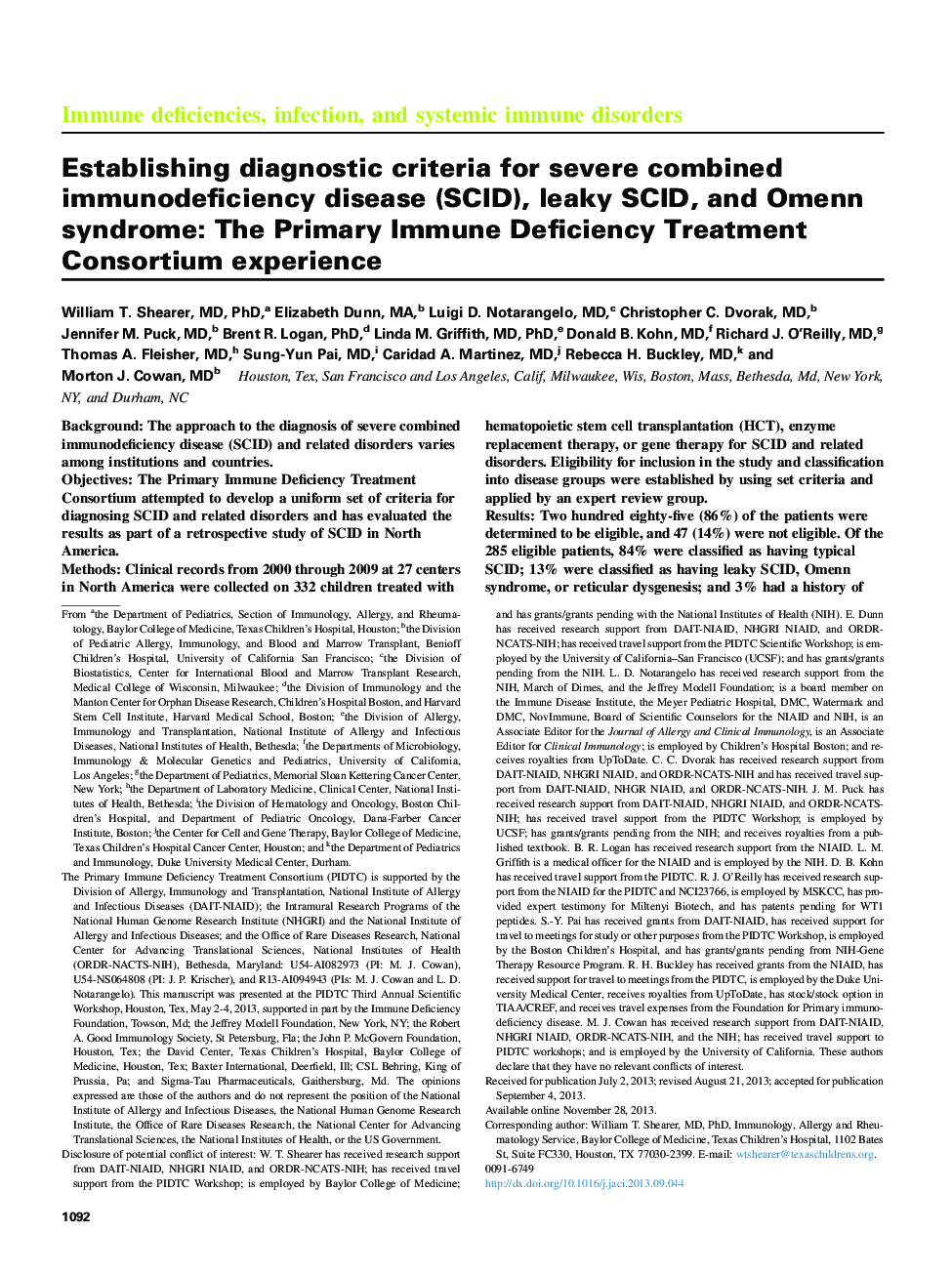| کد مقاله | کد نشریه | سال انتشار | مقاله انگلیسی | نسخه تمام متن |
|---|---|---|---|---|
| 6064416 | 1201861 | 2014 | 7 صفحه PDF | دانلود رایگان |

BackgroundThe approach to the diagnosis of severe combined immunodeficiency disease (SCID) and related disorders varies among institutions and countries.ObjectivesThe Primary Immune Deficiency Treatment Consortium attempted to develop a uniform set of criteria for diagnosing SCID and related disorders and has evaluated the results as part of a retrospective study of SCID in North America.MethodsClinical records from 2000 through 2009 at 27 centers in North America were collected on 332 children treated with hematopoietic stem cell transplantation (HCT), enzyme replacement therapy, or gene therapy for SCID and related disorders. Eligibility for inclusion in the study and classification into disease groups were established by using set criteria and applied by an expert review group.ResultsTwo hundred eighty-five (86%) of the patients were determined to be eligible, and 47 (14%) were not eligible. Of the 285 eligible patients, 84% were classified as having typical SCID; 13% were classified as having leaky SCID, Omenn syndrome, or reticular dysgenesis; and 3% had a history of enzyme replacement or gene therapy. Detection of a genotype predicting an SCID phenotype was accepted for eligibility. Reasons for noneligibility were failure to demonstrate either impaired lymphocyte proliferation or maternal T-cell engraftment. Overall (n = 332) rates of testing were as follows: proliferation to PHA, 77%; maternal engraftment, 35%; and genotype, 79% (mutation identified in 62%).ConclusionLack of complete laboratory evaluation of patients before HCT presents a significant barrier to definitive diagnosis of SCID and related disorders and prevented inclusion of subjects in our observational HCT study. This lesson is critical for patient care, as well as the design of future prospective treatment studies for such children because a well-defined and consistent study population is important for precision in outcomes analysis.
Journal: Journal of Allergy and Clinical Immunology - Volume 133, Issue 4, April 2014, Pages 1092-1098